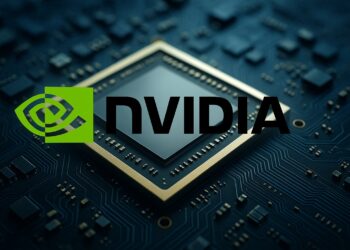The AMD stock (NASDAQ: AMD) has reached new heights.
Following the announcement of a groundbreaking multi-year partnership with OpenAI, shares of the U.S. chipmaker surged to an all-time high above $220, briefly lifting AMD’s market capitalization beyond $350 billion.
This isn’t just another supplier agreement — it’s a strategic alliance that includes a rare warrant arrangement, giving OpenAI the right to acquire up to 10% of AMD’s shares under specific performance and price milestones.
The news has reshaped how Wall Street views AMD’s role in the booming AI hardware sector, long dominated by Nvidia.
Market Snapshot — October 8, 2025
As of late trading on October 8, AMD stock was priced at around $223.64, up roughly 3.2% on the day.
During the session, shares traded between $211.04 and $224.97, setting a new intraday record.
Over the past 52 weeks, the stock has ranged from $76.48 to $226.71, underscoring the magnitude of its recent rally.
Trading volume exceeded 67 million shares, nearly triple its 30-day average, reflecting the surge in investor interest.
Year-to-date, AMD’s share price has climbed about 80%, outperforming both the Nasdaq 100 and the broader semiconductor index — a clear sign that investors believe the OpenAI partnership could be transformative for the company’s growth trajectory.
Inside the OpenAI Deal
1. Scale: 6 Gigawatts of AI Compute
The agreement covers an extraordinary 6 gigawatts (GW) of compute capacity over several years, starting with a 1 GW deployment of the upcoming Instinct MI450 GPU platform in H2 2026.
To put that into context, six gigawatts of data-center capacity represent hundreds of thousands of GPUs — roughly equivalent to the combined infrastructure of several major hyperscalers.
2. Structure: Warrants Tied to Milestones
As part of the deal, OpenAI received warrants to purchase up to 160 million AMD shares at a nominal price of $0.01 per share.
These warrants will vest in stages, tied to both delivery milestones and AMD’s stock reaching certain price thresholds up to $600.
If fully exercised, OpenAI’s stake could amount to around 10% of AMD’s total shares outstanding — one of the largest technology-linked equity arrangements in recent memory.
3. Revenue Impact
AMD estimates that this partnership and the associated production ramp could bring in more than $100 billion in additional revenue over the next four years.
Deliveries are expected to begin in late 2026, signaling a major acceleration in AMD’s expansion into AI data centers — one of the most lucrative markets in tech today.
Strategic Significance: AMD vs. Nvidia
The deal sends a clear message: the AI compute market is no longer a one-player game.
By partnering with AMD, OpenAI — which has long relied on Nvidia’s H100 and upcoming H200 GPUs — is actively diversifying its hardware supply chain.
For AMD, this represents a massive validation of its GPU and software roadmap, particularly the maturity of its ROCm software stack, which is increasingly compatible with leading AI frameworks.
This partnership could reshape the dynamics of the semiconductor industry, positioning AMD not merely as a fast follower but as a true second source in AI infrastructure — a crucial strategic development for hyperscalers worldwide.
Analyst Reactions: From Surprise to Upgrades
The scale and structure of the deal took even seasoned analysts by surprise.
- Jefferies upgraded AMD to Buy and raised its price target from $185 to $300, describing the deal as “transformative in scope and a signal of enduring dual-sourcing demand in AI compute.”
- Goldman Sachs projected that AMD’s share of AI training workloads could rise from the current low single digits to 15% by 2027.
- Morgan Stanley emphasized execution risk but admitted, “The narrative has shifted — visibility is now tangible.”
Retail investors also piled in, driving intraday trading volume to three times the norm and fueling momentum that pushed AMD stock to record highs.
The Meaning of the “6 Gigawatts”
Six gigawatts refer to the total computational power capacity of the AI infrastructure OpenAI plans to build using AMD GPUs — not energy output.
This capacity equates to massive-scale data centers capable of training next-generation foundation models.
For AMD, it means multi-year visibility on GPU demand, economies of scale, and a path to margin expansion as production ramps.
It also signals that OpenAI’s confidence in AMD’s technology has moved from experimental to operational.
Key Advantages of the Deal
1. Multi-Year Visibility
Long-term supply commitments offer AMD predictable revenue streams, reducing quarter-to-quarter uncertainty.
2. Improved Margins
Higher chip volumes improve manufacturing efficiency and gross margins, especially as advanced packaging processes mature.
3. Strategic Validation
Being chosen by OpenAI — one of the most influential AI companies globally — cements AMD’s reputation among other hyperscalers like Microsoft Azure, Google Cloud, and Amazon Web Services.
4. Software Ecosystem Momentum
The collaboration should boost adoption of AMD’s ROCm platform, closing the long-standing software gap with Nvidia’s CUDA.
Risks and Red Flags
Despite the optimism, several challenges could temper expectations:
- Execution risk: Fulfilling 6 GW of compute deliveries requires seamless coordination with TSMC and packaging suppliers.
- Share dilution: The warrant agreement could dilute existing shareholders if fully exercised.
- Competitive intensity: Nvidia remains the market leader, and its next-generation H200 and Blackwell chips are imminent.
- Supply-chain dependency: AMD’s reliance on third-party foundries and memory suppliers introduces fragility.
- Macro uncertainty: Any slowdown in AI-related capital expenditures could delay revenue recognition.
Technical Picture: Testing New Highs
The AMD stock has climbed to a fresh record near $226, breaking through prior resistance levels.
The $225–$227 range now acts as a technical ceiling, while support lies around $210–$212, near today’s session low and opening price.
A confirmed breakout above $227 could set the stage for further momentum, though overbought readings suggest short-term volatility is likely.
Financial and Valuation Outlook
Analysts expect AMD’s revenue to rise from $23.6 billion in 2024 to roughly $40 billion by 2026, driven primarily by AI data-center sales.
Earnings per share could nearly double over the same period, reaching between $6.90 and $7.20 if production milestones are met.
Gross margins are forecast to expand from 51% to as high as 58%, while data-center revenue is projected to grow at a compound annual rate of 25% through 2028.
However, valuation has already adjusted to reflect this optimism — AMD now trades near 48× forward earnings, leaving limited room for error if execution falters.
What to Watch Next
- Product milestones – Launch progress for the Instinct MI450 GPU and follow-up platforms.
- Software maturity – Broader ROCm adoption and compatibility with mainstream AI frameworks.
- Supply-chain scaling – Availability of HBM memory and CoWoS packaging.
- New contracts – Potential additional partnerships with other AI startups or cloud providers.
- Regulatory filings – Disclosure of warrant tranches in future SEC 8-K reports.
Analyst Scenarios
- Bull Case ($300+): Seamless execution and strong AI demand drive earnings growth beyond expectations.
- Base Case ($250): Moderate ramp with sustainable data-center momentum.
- Bear Case (<$180): Production issues, delays, or macro headwinds reduce visibility and confidence.
Investor Takeaway
The OpenAI deal marks a turning point for AMD.
It transforms the company’s role from a secondary player into a strategic pillar of global AI infrastructure.
For long-term investors, AMD offers exposure to the fastest-growing segment of the semiconductor industry.
For short-term traders, volatility will remain high — but momentum and sentiment are squarely in AMD’s favor.
Bottom line: AMD just earned its place at the AI table. Now it has to execute.
FAQ — AMD Stock and the OpenAI Partnership
Why did AMD stock surge?
Because OpenAI’s partnership confirms AMD as a legitimate alternative to Nvidia in large-scale AI computing.
What’s the value of the deal?
Up to 6 gigawatts of AI compute capacity and more than $100 billion in potential revenue over four years.
Will OpenAI own AMD shares?
Yes. A warrant gives OpenAI the right to buy up to 10% of AMD if milestones and price targets are achieved.
Is AMD stock overvalued now?
The stock is priced for strong execution — any delay or miss could trigger a correction.
Can AMD overtake Nvidia?
Unlikely in the near term, but the deal puts AMD on track to capture a meaningful share of the AI chip market.
Disclaimer
This article is for informational and educational purposes only and does not constitute investment advice.
Market data are current as of October 8, 2025. Investing in equities involves risk, including potential loss of principal.






